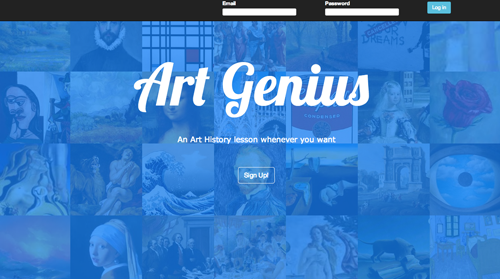Ryan Toussaint
The following projects are those I have been involved in during the past 4 years. In each, I tried to experiment with new libraries and frameworks

Big Byte Challenge - iDiscover (Audience Choice Award Winner)
Summary: iDiscover, a 45-second 'music speed-dating app' aimed at discovering new artists. Throughout the 45-seconds, listeners can like/dislike as many songs as they want and at the end, the app provides the user with a recommended playlist based on their preferences. The application was awarded the Audience Choice Award in October, 2013.
Details: The application was created during the Apple & AT&T Big Byte Challenge. The challenge was to use Apple's iTunes data and redesign a way that the information could be displayed to the listener. iDiscover initially generates random songs, but as the listener starts to like/dislike songs, the app starts to prioritize songs that it showcases. The end result displays the top three artists that the user may enjoy listening to, each artist's top songs, a preview of the song, and a link to buy in the iTune's store.
Photovoltaic Energy System Independent Study
Summary: 1.6Kw Photovoltaic Energy System designed to reduce power consumption and raise awareness about alternative energy.
Details: I chose to install a photovoltaic energy system at my high school (Lahser High School Bloomfield Hills, MI), while I was a junior there. This was an independent study class and I developed the concept and designed it on CAD software. Permits were obtained from the State of Michigan, and the contruction was completed in August, 2010. The project was featured in multiple newspapers and magazines, as well as, a Duke University article profiling the incoming Class of 2015.
Chronline NCAA March Madness Bracket
Summary: An NCAA March Madness Bracket developed to keep track of games, scores, and the progression of the tournament.
Details: The project was completed by Ryan Toussaint, Tyler Nisonoff, and Jim Posen while working for the Duke University Newspaper's online team. The goal of the project was to create a bracket that was convenient for Duke students to check during March Madness. The braket used HTML Canvas, and displayed the team's name, logo, and seed. Each team was also accompanied by a modal showing its regular season record and a summary of the team's season. The project was completed in February, 2013.

Microelectronics SmartCane Final Project
Summary: Constructed a 'SmartCane' out of discrete electronics in order to navigate a visually impaired person through an unknown course. Our group finished 3rd among 15 teams.
Details: The project took place over a six week period. This specific SmartCane went through several design changes, but the end result was a PVC enclosure with the electronics stored internally. There are two inductors on each side of the cane that detects the magnetic field given off from the wire in the flooring. This signal is then amplified and filtered through a custom circuit built and then sent to the user's headphones. By swinging the SmartCane, the user can find the wire below the flooring and correctly navigate the course. The whole project is powered by AA batteries on board. The project was completed in April, 2013.

BOE-Robot Final Engineering Project
Summary: A robot constructed to complete two tasks with unknown locations and values -- all while other robots were on the course as well. The challenge concludes with all robots completing their tasks and parking in the correct location. (Fastest time and most tasks completed wins).
Details: The BOE-robot was constructed by Ryan and his lab partner, Helio Liu. The tasks were to navigate to a location, complete the initial task (deciding which mysterious shape was placed in the middle of the room), and then drive to the second location and complete that task (identifying the mathematical difference between the number of black and silver tiles on a grid). This value is the correct parking spot for this particular robot. Throughout the challenge, all robots from the same lab section are running -- thus the BOE-Robot has object avoidance built in. The robot was completed in April, 2012.
FiSoC Website Development
Summary: FiSoC, the Future of the Information Society, is a new organization at Duke aimed at exploring how information technology is changing the fabric of society. For this project, I consulted and coded the basic framework of the website, that can be expanded as the organization grows. FiSoC's objective is to have content, publications, and infographics available online in the 2014 Fall.







